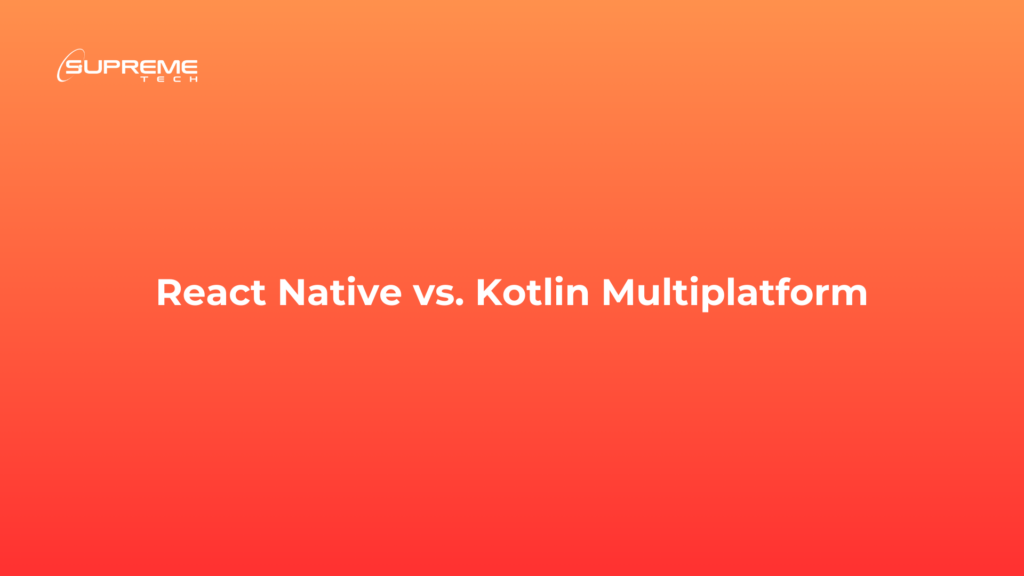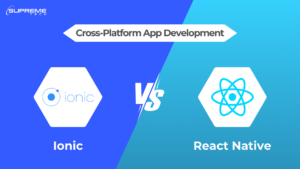React Native vs. Kotlin Multiplatform: Which one is better?
10/10/2024
881
Hi tech fellows! Continuing the series comparing different development frameworks, this week we will talk about React Native vs. Kotlin Multiplatform. The comparison unveils the similarities and differences between the two popular technologies for iOS and Android app.
This article will cover these main criteria:
- Performance
- Compatibility with Native APIs
- Development Experience
- Suitability for Different Types of Projects
- Time Efficiency

Performance: Native vs. JavaScript
React Native uses JavaScript and a bridge to communicate with native components. This makes it a solid choice for many applications, but it can face performance issues with complex UI or heavy animations. The JavaScript bridge adds overhead, which may cause delays in rendering or interactions for more performance-intensive apps. React Native is suitable for apps like social media platforms, where performance is important but not critical.
Kotlin Multiplatform, on the other hand, compiles shared code to native code. Since Kotlin Multiplatform uses Kotlin, which is native to Android, and compiles seamlessly to native code for iOS, it has the advantage of being closer to the metal. This results in better performance, especially for apps that need to process data quickly or have complex UIs. Therefore, Kotlin is a good choice for high-performance apps, like games.
Compatibility with Native APIs: Bridging the Gap
React Native provides an easy way to access native APIs through JavaScript. However, it might not have built-in support for every API you need. In such cases, you will have to rely on third-party libraries or write custom native modules. This extra step can increase development complexity, especially if you’re dealing with platform-specific features. React Native can handle most native APIs but may require more effort when using platform-specific features.
Kotlin Multiplatform offers direct access to native APIs. You can write native code for both iOS and Android where needed. This makes it highly compatible with native device features without relying heavily on third-party libraries or custom modules. It also reduces the chances of compatibility issues since you’re working with native code. If your app relies on complex features like camera controls or Bluetooth functionality, Kotlin Multiplatform allows for seamless integration with these APIs.
Development Experience: Simplicity vs. Flexibility
React Native offers a smoother and simpler setup process. Developers familiar with JavaScript can start building apps right away, making it a popular choice for web developers transitioning to mobile development. Its hot-reloading feature also allows for faster development cycles by letting you see changes in real-time. As a result, React Native is ideal for teams with a strong JavaScript background and those looking to get a product to market quickly.
Kotlin Multiplatform provides more flexibility but requires familiarity with Kotlin. Therefore, Kotlin Multiplatform is better suited for experienced developers who want more control over performance and platform-specific code. The learning curve is steeper for developers who aren’t used to native development, but it’s rewarding for those who need greater control over their code. The ability to share business logic across platforms while maintaining separate native UI components allows more customization.
Suitability for Different Types of Projects
React Native is great for projects where speed and simplicity are top priorities. It’s widely used for apps where the user interface is relatively simple and consistent across platforms. React Native also has a large community and a wealth of third-party libraries, making it easier to find resources and support. React Native can be a good choice for e-commerce apps or social media apps, where time-to-market and a consistent experience across platforms are more important than maximum performance.
Kotlin Multiplatform excels in projects where performance, security, and deep integration with native systems are crucial. It’s particularly well-suited for projects where business logic is shared, but UI elements need to be customized for each platform. Kotlin Multiplatform is ideal for fintech or health apps that require a high degree of security, performance, and native features.
Community and Ecosystem Support
React Native has been around since 2015 and boasts a large, active community. There are many libraries and tools available to make development faster and easier. However, maintaining these third-party libraries can sometimes become an issue, as some libraries may not be updated as quickly as needed.
Kotlin Multiplatform is newer but is backed by JetBrains and Google, making it a strong contender in the long run. Its community is growing, but it may not have as many pre-built libraries or resources as React Native yet. However, since Kotlin is the official language for Android, it’s likely that support for Kotlin Multiplatform will continue to grow.
Conclusion: Which Should You Choose?
- Choose React Native if:
- Your team has strong JavaScript experience.
- You need to get an app to market quickly.
- Performance is not the most critical factor.
- You prefer using pre-built libraries for common features.
- Choose Kotlin Multiplatform if:
- You want native performance and access to platform-specific APIs.
- Your project involves complex features or high-performance requirements.
- You prefer sharing business logic but building platform-specific UI.
- You want a future-proof solution backed by strong industry support.
Both React Native and Kotlin Multiplatform are excellent tools, but your choice should depend on the specific needs of your project. Each framework brings unique benefits to the table, so it’s essential to align your decision with your development goals.
SupremeTech provide high-skilled React developers for your project. Book a free consultation with us now!






















